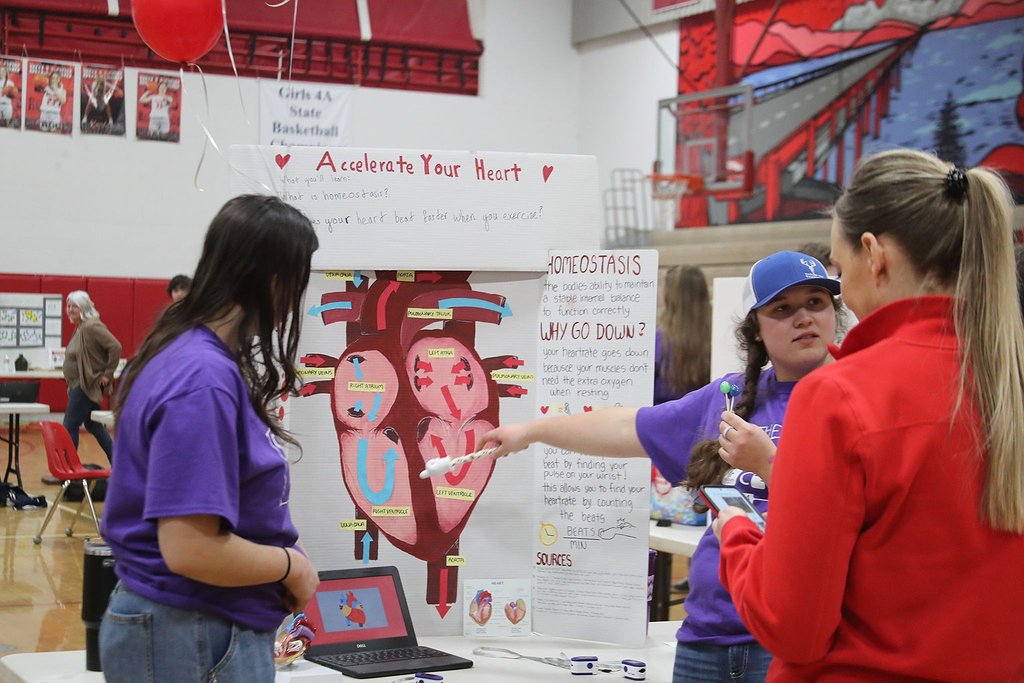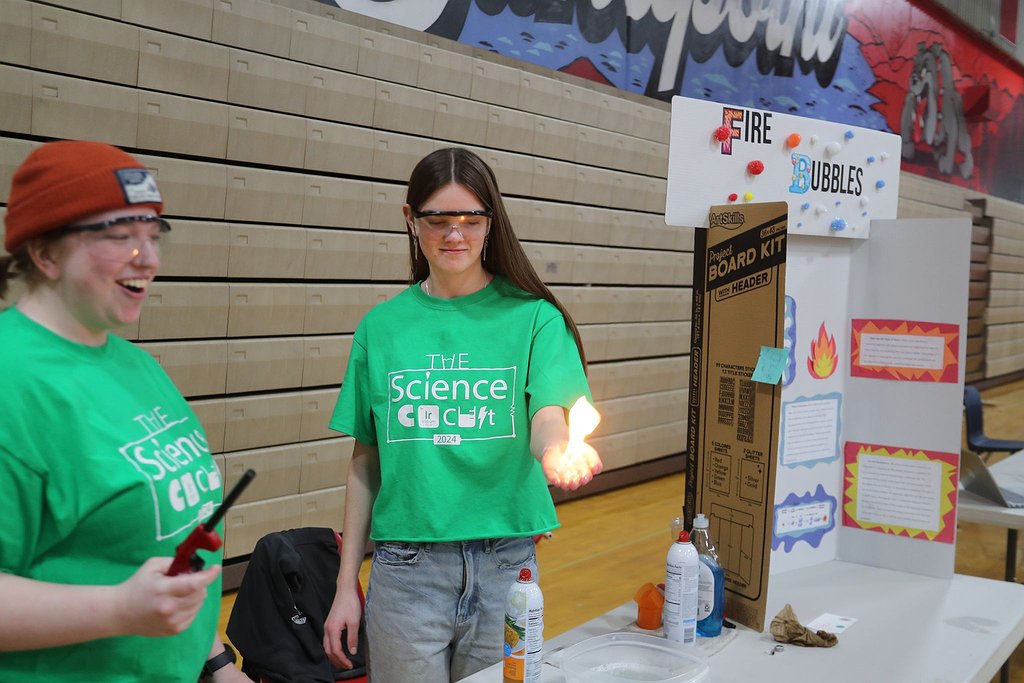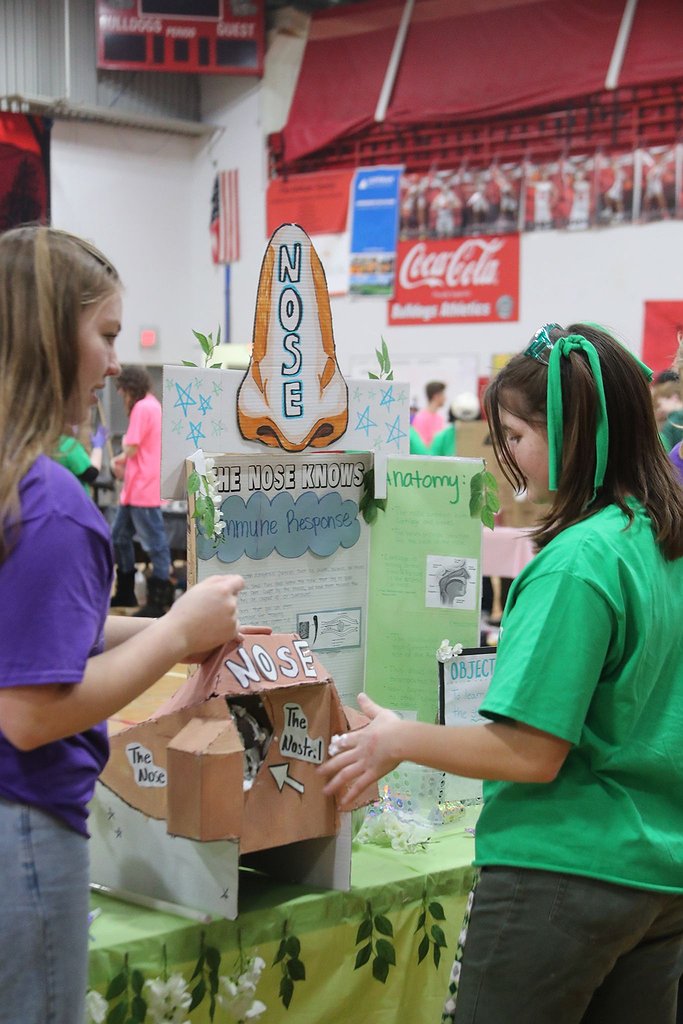Students inspire through SHS Science Circuit
SANDPOINT — Hands lit on fire and lemons producing electricity were just a few of the experiments making an appearance Sandpoint High School’s Science Circuit this year.
Over 40 exhibits were showcased as the school’s honors chemistry, physics, anatomy and physiology students put what they are learning into practice for younger students and the community. One exhibit demonstrated the protective functions of the nose while another demonstrated the Birkeland Eyde process, which produces nitric acid from atmospheric lightning.
Throughout the day, around 500 total students came in to interact with the experiments.
Both the students and their experiments exceeded expectations this year, Kari Granier, SHS assistant principal, said
“These guys kept the engagement and curiosity alive,” she said.
At one booth, students Phoebe Lang and Ruby Evans presented their lemon battery, sharing how they connected lemons with copper wires to create energy. When the wires were brought together, a red light turned on.
“In this experiment, the copper strip is the cathode and the zinc is the anode,” the team shared on a poster they had created. “The lemon juice acts as the electrolyte and removes electrons from the zinc. Electricity is generated based on the chemical reaction between the zink, copper and lemon juice.”
Bailey Lancaster and her project partner, Hana Luttman, both juniors at SHS, put together an interactive exhibit that teaches about the immune response of the human nose.
“I was a little nervous at first because I didn’t know if the kids would like our activity, but they ended up loving it,” Lancaster said. “... The kids got the opportunity to stick their hand up a model nose where they could feel the different types of nose hairs, and the mucus which in this case was shaving cream. I thought it was great to see their reactions, and they seemed very interested. It reminded me of when I was a sixth grader and got the chance to visit the Science Circuit.”
Another booth showcased “fire bubbles” where visitors could dip their hand into a bucket of water, and then into what appeared to be a soapy solution. The girls running the booth would use a lighter to set the solution, which actually had cooking spray in it, on fire. As they conducted the experiment, the pair explained to the younger students that dipping their hands in the water first protected them from the fire.
The science circuit, which was launched in 2014, was started by SHS chemistry teacher Mamie Brubaker to teach older students about science and to inspire younger students with the outcome
During a past circuit, Brubaker said the idea was inspired by a study that found the biggest factor in determining whether students go on into the more advanced science and math classes and whether they ultimately choose a STEM career, is the presence and influence of a role model. The study helped shape the style of the event.
The Science Circuit showcases various fields of science, with each circuit showcasing a distinct selection from the last.







